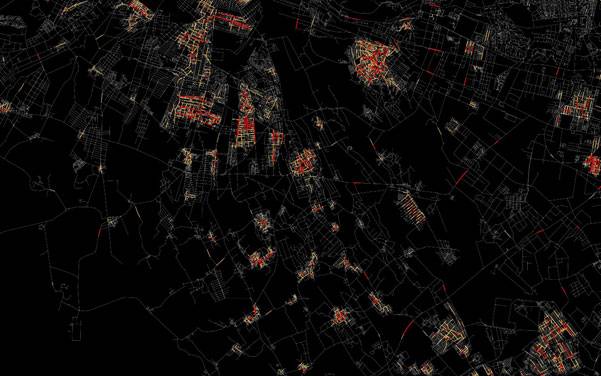 Research
Research

Subject
Non-Linear Urban Dynamics: an analytical, spatial-network based investigation into the impact of urban development programmes on patterns of sub-regional urban growth, the case of Tehran Metropolitan area
First and second supervisors
Abstract
This research looks into the process of urban planning and uses quantitative urban models to assess the impact of planning and policy making on the growth, or intensification of informal growth. It argues that, to some extent, informal growth is explained in relation to the implementation of development programmes and policies. The theoretical foundation of this claim draws from studies on the relationship between society and space – also known as space syntax – where the built environment and communities interact and the built form results from the interaction between the two.
This research sees informal settlements as a synthesis of interaction between the growing urban population and the city. The core argument is a continuation of previous research in the study on informal settlements, and that conventional methods of study cannot address the complexity of issues in informal growth. An evidence-based research using big urban data is required to investigate how through the interaction between the growing population and developing urban environment – informed by development policies – informal growth is generated and intensified.
Accordingly, this research uses a spatial network model to explain the characteristics of the built landscape in the metropolitan area of Tehran and sets it against the implemented development programmes and policies to see to what extent the planning process correlates with the built environment. The model uses layers of morphology, demographic, social and economic data to address the complexity of relationships between the driving forces of change. The model uses complex clustering algorithms to read the urban fabric and explain the process through which it has grown in relation to the implementation of development policies.
Biography
Sepehr Zhand is an urbanist, and a PhD candidate at the Space Syntax Laboratory, UCL. His research draws from his practice on dilapidated urban fabrics and informal settlements where he worked both as an architect and development planner.
Sepehr is interested in incorporating the use of crowd sourced big data to understand how development policies are received in the context of the developing world. He is especially interested in understanding how planning decisions have a direct or indirect impact on emergence or intensification of informality.
Before joining The Bartlett, Sepehr was a research associate at the University of Tehran and conducted design studios at Azad University's School of Architecture. He was also a Design Tutor at the Welsh School of Architecture, University of Cardiff, and taught at The Bartlett School of Architecture for the Space Syntax methodology workshops.
Links
- Publications
Zhand, S., Sobhani, A. & Shokouhi Bidhendi, S. (2018) ‘A Critique on the Urban and Architectural Processes Regarding Mehr Housing Program, in Comparison to the Endemic Architecture and Urban Planning Measures and Values: The Case Study of Khameer Seaport’. Journal of Researches in Islamic Architecture, vol. 6 (3), pp. 91-116.
Sepehr’s studies at The Bartlett are sponsored by The Bartlett School of Architecture and the UCL Doctoral School Fellowship.
Image: Globally connected and locally integrated – regional analysis for irregular urban growth: Sepehr Zhand.
 Close
Close

